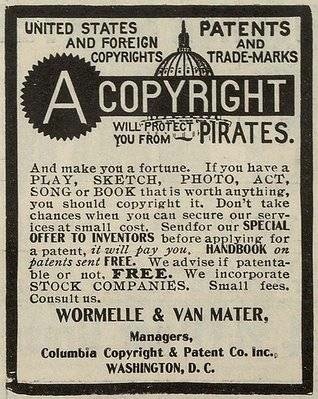Link:
https://dannyman.toldme.com/2013/01/04/our-future-autonomous-cars-and-transit/
My opinion, one of many, as left in a comment:
The current Google Car can operate on city streets autonomously, but it needs someone doing the backend work of getting all the streets mapped out perfectly, figuring out exactly where the lanes are. Then in order to do a truly autonomous taxi service, you’ll want a two-way video linkup for the dispatcher to pilot the car if it gets stuck in some situation like the fire department blocking the street, or to monitor security.
For that reason, the current livery model works really well: a small, local company will service its fleet and its IT needs. The biggest expense, the driver, will be eliminated. This will serve an evolutionary role of a taxi service within a limited service area. This will be mostly shopping trips for car-less people, and “last mile” services to transit connection points, like Taxis serve now. The evolution comes with lower cost: short-haul, off-peak commuter needs, more “last mile” transit service where an autotaxi will be faster and more convenient than the local bus service, but also cheap.
What happens next? “Roaming” agreements among carriers sharing a common technology platform. The service areas of the autotaxi companies grow larger: your local autotaxi can drop you off on a shopping trip to a regional big-box store two towns over and the local autotaxi there can bring you back cheap. Expanded mobility, less reliance on transit.
This doesn’t mean the end of transit. Individual automobiles still require more energy and infrastructure to operate. The autotaxi will dominate short trips, but especially at peak demand, we will need to rely on higher-capacity transit backbones.
The biggest driver of the need for peak-period transit handoff is the capacity limitations of the autotaxi carriers. You simply can not carry everyone, but you want to be a part of the picture. So, yeah, the service gets you from your house to the transit hub, maybe work out relationships with local transit agencies so thaty “last mile” can be served by auto-taxi as a part of the transit fare itself.
The other limitation is for longer-range travel, even a fully autonomous rubber-on-pavement highway system will not be able to match the speed of rail-based or air travel. The autotaxi might drive you fifty miles to the high-speed train station, but then you’ll board the bullet train for LA which will be faster and charge a lower fare.
Anyway, the roaming evolution will mean that we go from local taxi service to regional airport shuttle service, and this will be great for those who live some distance from a long-haul transportation hub who want to make it to/from the airport, &c.
I think autonomous cars are a very reasonable evolution on human-piloted cars, which were a very reasonable evolution on horse-drawn carriages. In the twentieth century we evolved from horses to humans, and in the twenty-first we will evolve even more seamlessly from human to computer.
Our streets didn’t change much from the carriage to the automobile era. They’re wider and too dangerous for people to walk in. I doubt the streets will change much in the autonomous era, except they’ll narrow again and it will be safe to walk, bike, and play in them again.
My other prediction is that the autotaxi will make getting around so convenient, that car ownership will continue to decline. You will see a winners-and-losers scenario in the auto industry: the losers will realize too late just how badly they are in trouble. They will try to spread Fear, Uncertainty, and Doubt as to the safety and wisdom of reliance on autonomous vehicles, just as they try to sell some. The winners will have identified the coming trend and geared their business to serving the needs of autonomous fleet operators, and to those niche consumers for whom autonomous vehicles are not appropriate, or who just love driving their own car. Other winners will include pedestrians, cyclists, the young, the elderly, people with disabilities, suburbanites, night life, and very likely the environment.
Feedback Welcome
Link:
https://dannyman.toldme.com/2013/01/06/shen-yun/
Some weeks back I saw a poster for “Shen Yun: Reviving 5,000 Years of Civilization” at work and thought “Excellent! The wife digs artistic performance and bonus points for digging some traditional Chinese culture.” I grabbed some tickets and mentioned to a coworker. “Shen Yun? That’s Falun Gong.” I know very little about Falun Gong, except that the Chinese government views them as a threatening cult. Of course, the mainland government is easily wigged out over any perceived threat to stability, so I figured that doesn’t tell us much. We’re seeing a performance sponsored by an oppressed religious minority. That could mean anything, really.
The performance was pretty cool. Lots of dancers in colorful costumes evoking stories from Chinese history. I’d say it is like watching a Chinese version of the Nutcracker Suite. Lots of color, lots of movement, and good music. Although they’re telling mostly ancient stories they make effective use of a modern prop of a projected backstage. This saves not only on set design, but the characters at various points jump off the back stage and fly up into the screen as digital avatars. The first time I saw this I thought it was a bit gimmicky, but by the second instance I thought “hey, that is pretty neat, and I bet really magical for the kids.”
And then there’s the Falun Dafa bits. They have some solo singers come out and sing in Chinese, which is cool. They even put the lyrics on the back screen in Chinese and English. I am sure some of the poetic nuance is lost in translation, but the songs lament that we are … most of us, anyway … Gods from the Heavens who have come down to Earth for some reason, something about breaking the cycle of reincarnation and restoring the cycle of creation and destruction. To the disinterested observer it comes across as Buddhist Scientology, and the cycle of creation and destruction sounds like the sort of thing that would raise the ear of a mainland censor.
Two of the dance performances are set in modern China. In one, a tourist gets sent to jail when he unintentionally takes a picture of an innocuous Falun Dafa protest. The guy is tossed in a cell with the Falun Dafa kids, whom he wants nothing to do with, but after the guards treat him contemptibly, everyone in the cell identifies their common predicament. I thought “alright, the Chinese government overdoes it, and many social reform movements have found strength in the jails. Right on, brothers! Fight the power!” In the final dance, the Falun Dafa are having a great time protesting in Tienanmen Square. Right on, sisters! Let us see your “tank man” performance! As soon as the Chinese police come out to bust some heads, a massive earthquake starts to destroy Beijing. Huh? That kind of sucks! But, no worry, the Gods come down and restore Beijing … everything except the Great Hall of the People … ah!
Yeah, I can see how even a reasonable government might not be super enthusiastic about that sort of performance.
The show was overall entertaining. I would still hope that people can practice their religion freely. But whatever innate sympathy I might have had for the Falun folks is diminished, especially by their last performance. When it comes to resistance movements, I am most sympathetic to the non-violent, and to those who aren’t fantasizing that apocalypse is an element to their eventual success.
1 Comment
Link:
https://dannyman.toldme.com/2013/01/14/speak-softly-and-carry-a-crowbar/

We are not the young, strong, boisterous nation that we once were. We are older and slower, hopefully a bit wiser. We are beginning to suspect that if we sold the old gunboat we have parked in the driveway that we could afford to repave the driveway, upgrade to energy-saving appliances, help the grandkids through school, and still have a few bucks left over to take the wife out for tango lessons.
But how can you be safe without a gunboat in the driveway? Well, I have been thinking about that. It turns out that almost any burglar can be scared off by a guy wielding a 2×4, or a baseball bat, or a crowbar. In fact, Grandpa used to sleep with a crowbar by his bed, just in case. He was tough and never scared. And these days if you don’t find an old man with a crowbar scary you can bet his wife is standing behind him, on the phone with the cops.
Feedback Welcome
Link:
https://dannyman.toldme.com/2013/01/30/presidential-decree-4-webinars/
It is cool if you want to conduct training or give presentations using Internet technology. However, if you want to call it a “Webinar” you are required to ship a safety helmet and sippy cup to all participants. If you’re going to be retarded, be responsible about it.
Feedback Welcome
Link:
https://dannyman.toldme.com/2013/02/15/presidential-decree-5-traffic-light-equality/
“We hold these truths to be self-evident, that all people are created equal, that they are endowed by the Creator with certain inalienable rights: among these are life, liberty, and an equal right to cross a road intersection.”
If the pedestrians must push a button to cross the street, then the motorists have to push a button too.
If the bicyclists have to walk over the sidewalk to press a button to get a light to cross the street, then motorists have to get up out of their cars to press the button to cross the street.
If there are expensive sensors embedded in the road to detect a car to give them a light, then there are less expensive sensors to detect the presence of pedestrians and bicyclists who may also wish to cross the street.
If that is too difficult, then knock it off with the sensors and just program the light to give everyone a chance to traverse the intersection safely.
Also, it is decreed that if you want sensor-activated lights, then ye shall fund research to use weatherized video cameras to watch traffic of all modes approaching the intersection, in an effort to cycle the lights appropriately before the pedestrian/bicycle/automobile gets to the red light.
See Also: Copenhagenize.com: Motorists Dismount
Feedback Welcome
Link:
https://dannyman.toldme.com/2013/02/19/saq-is-a-dsl-modem-actually-a-modem/
This question came to mind the other day. “DSL modem” sounds dumb, because as any geek over the age of 30 knows, a “modem” is a device with MODulates and DEmodulates a digital signal over an analog network. Thus a “Digital Subscriber Line” has no need for modulating and demodulating.
Except, DSL is actually an overlay on the analog telephone network. So, wait . . . what?
Wikipedia wastes its time on a pointless distinction:
“The term DSL modem is technically used to describe a modem which connects to a single computer, through a USB port or is installed in a computer PCI slot. The more common DSL router which combines the function of a DSL modem and a home router, is a standalone device which can be connected to multiple computers …”
Yeah, really helpful. But as geeks know, you need to check the Wikipedia talk page:
The usage “DSL Modem” is not erroneous. A DSL modem does indeed perform modulation and demodulation. It uses either Quadrature Amplitude Modulation (QAM) or Phase Shift Keying (PSK) modulation. Multiple modulated subcarriers are then combined into an OFDM stream. The distinction between this type of modem and a traditional one is that the traditional one modulates audio frequency signals whereas the DSL modem is upconverted to an RF band. But they both perform modulation and demodulation. The digital signals are not sent as baseband digital signals.
I do not know what all those words mean, but I read that as “a DSL modem is still a modem. It modulates and demodulates a digital signal into the RF band of a telephone line.”
I made my own contribution to Wikipedia’s Talk page:
The distinction between whether your “DSL modem” connects via USB, ethernet, wireless, or provides NAT, sounds like a spurious distinction to me. I interpret and interchange “DSL modem” and “DSL router” as “the network device that bridges your local computing resources to your network service provider.”
But if I have learned anything about nomenclature disputes on Wikipedia, it is that they are not worth the effort.
Feedback Welcome
Link:
https://dannyman.toldme.com/2013/02/19/presidential-decree-6-intellectual-commons-restoration/
In an age where innovation and creative thinking move ever faster, it is sick and demented that we have extended copyright periods to over a century. It is shame for the current generation and those of the twentieth century that the intellectual commons ended in 1923.

The gradual seizure of the intellectual commons. CC: Wikipedia
The United States hereby withdraws from International Copyright Treaties, especially the Berne Convention. The substance and spirit of the Copyright Law of 1790 shall be restored. All intellectual property rights must be recorded by the government. Software copyright protection requires a copy of source code for software to be stored in escrow with the government. Exclusive rights are conferred to the author for 14 years, plus an option to extend rights for 14 years if the author is alive at that time.

A Copyright Will Protect You From Pirates! CC: Wikipedia
All other works are Public Domain. Upon expiration of software copyright protections, the government will publish the source code.
Feedback Welcome
Link:
https://dannyman.toldme.com/2013/02/25/yahoo-mandates-19th-century-commuting/
I have been excited to see what might come of Yahoo! with Marissa Meyers at the helm. I am really glad to see that, after years of stagnation, Flickr has been improving. Free food and smartphones for employees? Sounds swell. But the buzz now is that there shall be no more remote work. The only way to be productive is to come to the office and feel the buzz and bounce ideas off coworkers.
I am happy to point out that, while we don’t get free smartphones or free food, my employer does issue remote employees with a hardware VPN device that provides corporate wifi, and a videophone. And we are hiring.
In my experience as a non-management technical professional, there is some virtue both to working from home, and to working at the office. The office presents great opportunities for collaboration: working through ideas and solving problems. Working from home, for some people, provides an excellent space to focus on getting some work done without interruption. You can get more hours of productive work when your commute is shortened to a walk across the dining room, and when there’s no pressure to quit at a certain time to appease the demands of the train schedule or traffic.
For some people, there’s no place like the office . . . some people can do better work from home, some people do not. Managers and executives, the bulk of whose work is meeting with others to make collaborative decisions . . . it seems that they may take several meetings from home and when they get to the office they feel uncomfortable that the busy hum of productive creative energy isn’t located there. I believe that managers who can structure the working and communication practices of their teams to effectively collaborate and track work progress without requiring a physical presence have an advantage over those who can not.
I live near the office and frequently collaborate with my manager, so most days I make the trip in. Sometimes when I need to focus on a project, or work with a remote time zone, I’ll commute to the home office. I have been with Cisco for over five years, now. I spent one of those years in New York, and my tenure here would have been much shorter without the flexibility to telecommute.
David Fullerton makes a good case for effective remote work.
1 Comment
Link:
https://dannyman.toldme.com/2013/02/27/2013-02-27-indeed/
Okay, I just have to say, Amen, XKCD and ISO!

If you are naming files on a computer, please use this format. The beauty is that if you list files in “alphabetical order” then these dates get listed in chronological order, because as far as a computer is concerned, the “0” comes before “1” and so forth. (And a year is more significant than a month is more significant than a day of the month . . .)
It is important to have that leading zero! Why? Because we have more than 10 months! Allow me to demonstrate:
0-11:32 djh@noneedto ~$ (echo "2013-02-27" && echo "2013-12-27") | sort
2013-02-27
2013-12-27
0-11:32 djh@noneedto ~$ (echo "2013-2-27" && echo "2013-12-27") | sort
2013-12-27
2013-2-27
If you are interacting with strftime() then what you want to remember is %F!
0-11:38 djh@noneedto ~$ date +%Y-%m-%d
2013-02-27
0-11:38 djh@noneedto ~$ date +%F
2013-02-27
0-11:38 djh@noneedto ~$ date +%Y%m%d%H%M # I sometimes use this for file timestamps but dont tell Randall Monroe
201302271138
For my photographs, I have a directory hierarchy of %Y/%m-%B:
0-11:43 djh@noneedto Photographs$ find . -type d | sort | tail
./2012/08-August/Costa_Rica/Santa_Teresa
./2012/08-August/Costa_Rica/Ziplines
./2012/09-September
./2012/09-September/Sonogram
./2012/10-October
./2012/11-November
./2012/12-December
./2013
./2013/01-January
./2013/02-February
This gives me the human convenience of seeing the month name on my folders, but the computer sorts those folders in chronological order.
Feedback Welcome
Link:
https://dannyman.toldme.com/2013/03/21/with-google-you-can-not-trust-the-cloud/
Mike Loukides strikes a chord:
How can I contemplate moving everything to the cloud, especially Google’s cloud, if services are going to flicker in and out of existence at the whim of Google’s management? That’s a non-starter. Google has scrapped services in the past, and though I’ve been sympathetic with the people who complained about the cancellation, they’ve been services that haven’t reached critical mass. You can’t say that about Google Reader. And if they’re willing to scrap Google Reader, why not Google Docs?
An excellent point.
I recall the first time I adopted a “cloud” service for my technology. It was Flickr. I had managed my photos with my own scripts for years. Others had installed Gallery, which always struck me as limited and ugly. Flickr was new at the time, and I really liked the aesthetic. But, upload all my photos there? They had just been bought by Yahoo. How long is Yahoo going to support the service? I still keep local archives of my photos, but I have thousands of photos shared on Flickr, and how do I know that all those captions, comments, geotags, annotations, sets and collections, that all that data might not one day go down with the slowly sinking-ship that is Yahoo?
What reassured me was the Flickr API. Worst case, I should be able to write a script to pull all that data to a local place somewhere and later reconstruct my online photo archive. If Flickr were going down, someone else would probably write that script better than I could. It is a grim thought, but at least when Flickr dies, there is an exit strategy.
That is one reason why I can sort of trust Google. They’re pretty good about supporting APIs. They’re killing Reader? That’s dumb. But in an instant, Feedly was able to take over my subscriptions from Google for me, and I just had to spend a few minutes learning a somewhat different interface.
It would be nice, though, if, when software was retired, especially cloud software, that it could be open sourced and available for the die-hard users to keep it running on their own servers somewhere. Admittedly, cloud services especially are vulnerable to further external dependencies . . .
You would think, though, that it shouldn’t take much effort on Google’s part to announce that a service has been retired, but they’ll keep it running indefinitely, at least until some point where the vast majority of the users had wandered on to more compelling alternatives. They still keep the Usenet archive around.
And, yes, I rely on DocsDrive. This killing Reader fiasco sounds like an advertising ploy for Microsoft. I rely on DocsDrive, but maybe Excel is a more trustworthy option for the long term . . . ?
Feedback Welcome
Link:
https://dannyman.toldme.com/2013/04/03/dream-phone-got-stolen-in-london/

Last night as I dreamed, I was in London. I rode the tube out to some far-flung station and picked another route back. At a pub my phone got stolen. Various attempts to engage the police failed because they had more pressing concerns, like a dead body at the hotel. I called my phone and the girl who stole it answered. She wasn’t interested in giving it back and thought it was poor form on my part to have lost it. Eventually, I went back to the pub and saw my phone in her hands. The thief was a skinny blond taking a picture of her friends, and I recognized her voice, and my phone. I walked up to her and elbowed her in the face, and took my phone back. The girl had a bloody nose and one of her friends seemed very alarmed over the assault. I showed her the phone and explained the situation, and her friend nodded in understanding, and apologized. I removed the huge silly case she had put on it, and started digging through the phone itself wondering what manner of dross she had installed on it, then Tommy started to cry, so I woke up and took a very brief moment to try and remember the dream.
Feedback Welcome
Link:
https://dannyman.toldme.com/2013/04/03/remember-gwen-araujo/

http://en.wikipedia.org/wiki/Gwen_Araujo
Back when I lived in Mountain View I was deeply saddened to read of the death of Gwen Araujo in 2002. She was a transgendered teen in the South Bay who was brutally murdered by classmates. Why? She had given a few blowjobs to the boys. The boys realized in horror that they had committed a “homosexual” act. They felt betrayed by Gwen, beat her to death, and buried her in the woods.
The tragedy bothered me because Gwen was apparently accepted by these friends enough to become somewhat intimate, but the homophobia that had been instilled in these kids was so strong that they went from lust to the worst sort of violence.
For me, “Gwen Araujo” is as a reminder that homophobia is a deadly poison that can turn even a lover into a brutal murderer. Gays aren’t murdering people: it is homophobia that is the dangerous sickness. The younger generations have proven increasingly tolerant, but Gwen’s friends were still held under its deadly influence . . .
I dream of a world in which people can be who they are as they are without fear of violence.
Feedback Welcome
Link:
https://dannyman.toldme.com/2013/04/19/vmware-workstation-excessive-key-repeating-in-ubuntu-guest/
I like to virtualize my workstation using VMWare Workstation. Lately, my Ubuntu (kubuntu) 12.04 guest would exhibit really annoying behavior whereby it would insert lots of extra letters as I typed, seemingly at random.
I cast about a few times for a fix. I tried VMWare KB 196, and a few solutions offered in an abandoned blog. But what did the trick is good old xset.
I added this to my .bashrc:
xset r rate 500 20
As I understand it, this means “key repeat only happens if you hold a key down for at least half a second, and then not for more than 20 times.”
My workstation has been way more pleasant to deal with ever since.
Feedback Welcome
Link:
https://dannyman.toldme.com/2013/05/13/embed-page-refresh/
Feature request that certain JIRA dashboards should reload more frequently than every fifteen minutes. So, I cooked up some JavaScript to hide in the announcement banner:
Now users can add refresh=nn and the page will reload every nn seconds. This ought to work in most cases where you can sneak some HTML into a Web App.
Function gup stolen from http://stackoverflow.com/questions/979975/how-to-get-the-value-from-url-parameter.
Feedback Welcome
Link:
https://dannyman.toldme.com/2013/05/21/flickr-makes-me-want-to-cry/
I really really loved the Flickr interface and the new thing they rolled out today makes me feel like I have been punched in the gut. I added my voice to the torrent of objections in the forums at http://www.flickr.com/help/forum/en-us/72157633547442506/

A test view of a plugin I wrote to view Flickr photos on a WordPress site.
Wow. It is hard even to add a post here.
I loved the old interface. I also loved that when you added new layout options to the old interface, they were OPTIONS that users could turn on or off.
I like that you could browse photos with annotations, click on a photo for a larger view, look over the metadata, &c . . . then click through the photostream or set.
Back when I joined in 2005 I was wary that Yahoo! might eventually do something stupid to what was really a very nice, well-designed interface for managing photos. My main assurance is that there would still be an API . . . I guess I will have to brush off the old API . . .
Really, you should give users the option to use the interface they like. This feels like instead of sitting down with users, seeing how they use the site, figuring out how to make it work better, you brought in some jackass designer who sighed that the site looks oh-so-2005, and decided to replace it with a mashup of Google Image Search (which is a terrible UI, by the way) and the Facebook header image (which wastes space at the top of screens which are getting shorter and wider but at least looks kind of neat.)
Please respect your existing users, many of us who have been paying you real, cash money for years now, and give us at least the option to enjoy the user interface we loved about your site.
Thanks,
-danny
Feedback Welcome
Newer Stuff »
Arrr!
. . .
Avast!
Site Archive








